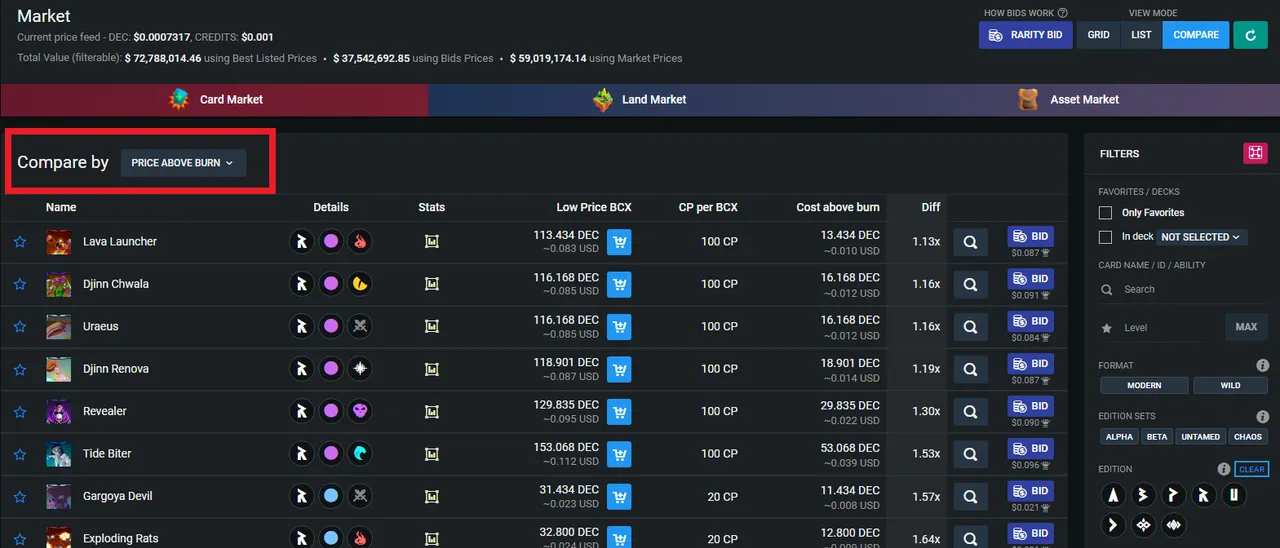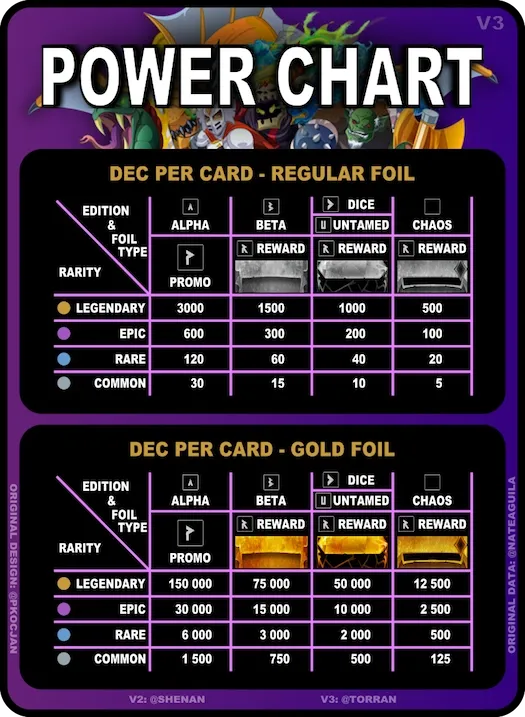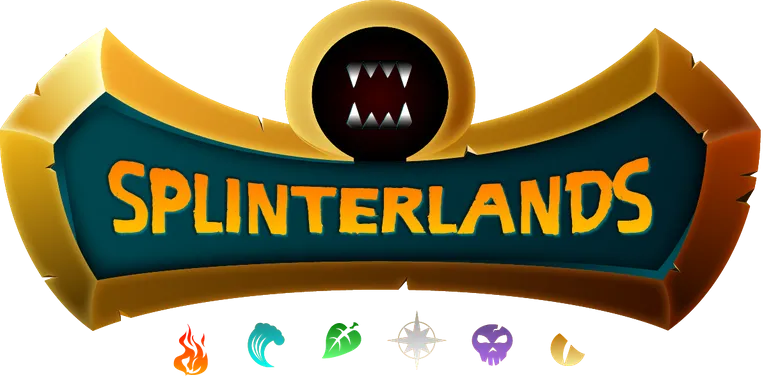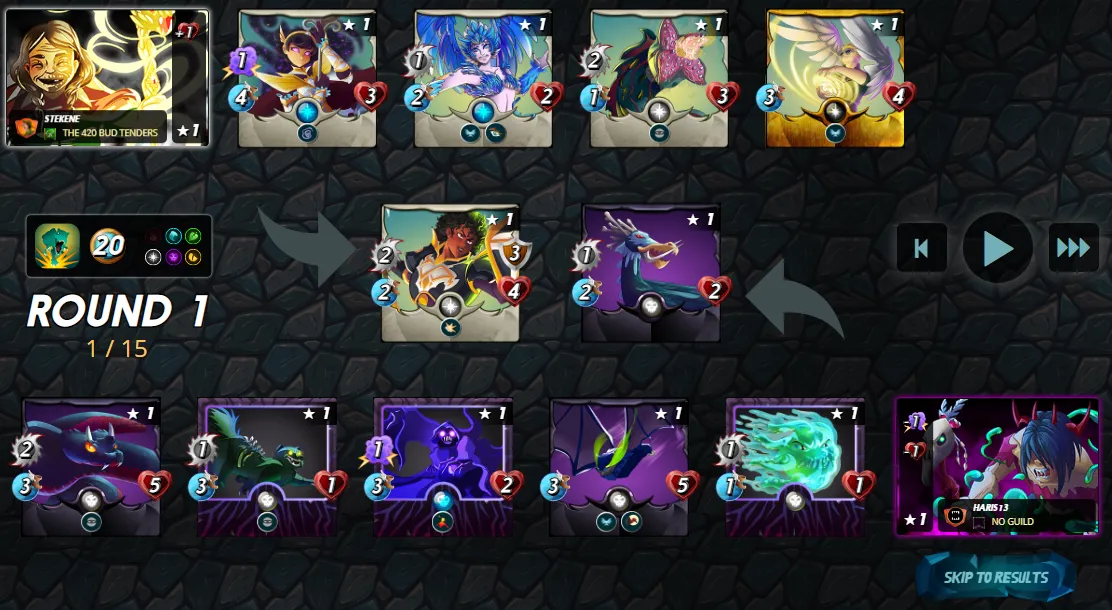Some Splinterlands cards won't go cheaper
Hello everyone, today I was browsing at the card market of @peakmonsters at https://peakmonsters.com/market. It's definitely an awesome second party marketplace, so I would recommend you to check it out if you're not using it already. But today I want to talk about 1 topic in particular which I discovered: Compare cards by price above burn. Probably you're wondering what this all means, well I try to explain it as easily as possible!
When you go to the above site, you'll see that on their marketplace, you can filter the cards in a lot of different ways. Definitely check out the options! Will maybe write another article about all the other options, as plenty of them really come in handy depending on what you're looking for. You have to select 'Price above burn' as showed on above picture. Ok, all good, you now know where to find it. BUT what does it all mean?
Burn value of cards
Every Splinterlands card can be burnt for a certain amount of dec. It depends on which rarity the card has and from which set the card is as well as being a gold foil or a regular foil. You can see the amounts of dec which you would receive if you burn a card in above chart. As you can see, gold foils are worth more and the older the version of the card is, the more dec it's worth. This makes sense as the older cards are more scarce, so they are worth more.
Why is it implemented like this? I don't know the official explanation, but my take would be to have some kind of under barrier. If the value of cards would go below those burn values, than people will scoop them up, burn them probably and so the total amount of those cards would go down, which would help to maintain a certain price for those cards. As the burn value is indicated in terms of dec (Dark Energy Crystals), a Splinterlands token which is soft pegged to 1000 DEC = $1, this helps the ecosystem. Caveat: DEC isn't hard pegged and at the moment of writing, it's below its peg. So 1000 DEC doesn't equate to 1$ but to $0,73.
Why is looking at the burn value important?
Well, as already mentioned, we could see it as a lower barrier for the value of a certain card. When we look at the first picture, it shows the cards which are closest to their burn value. So these cards could in theory only go upwards in value if they would touch their burnvalue. (Ofcourse the whole Splinterlands game and company could suddenly fail and than nor dec nor the cards will hold their value. So don't see it as a 100% risk free investment, those don't exist ;) )
If you would like for example to max out those cards, than now is a good moment as those cards are so close to their burn value. It's always a good idea to keep an eye on those values, maybe sooner or later one would sell a card below its value which gives an arbritage opportunity to even earn some dec while scooping up underpriced cards.
Conclusion
It's always a good idea to keep an eye on the burn-to-dec value of a card. I would like to thank @peakmonsters as well for their smooth and clear marketplace for Splinterlands cards and assets!
How did I begin to play Splinterlands?
It all began in December 2021, I was a bit bored and was looking for a new game to play on my laptop. After googling a bit, I saw the term play2earn in my google results. I didn't know it at that time but it seemed awesome, earning money while playing games instead of spending money on those games. Soon I learned that play2earn means that you can indeed earn some money to play the games. How does it work? While playing those games, you can earn NFT's of those games. These NFT's can be traded and sold for cryptocurrencies which could be swapped for fiat if you would like to. That's how I started.
Do you want to try out Splinterlands aswell?
Here is my referal link: https://splinterlands.com?ref=stekene




